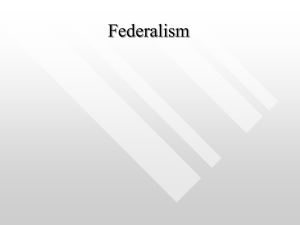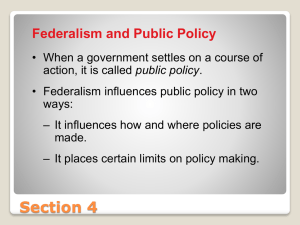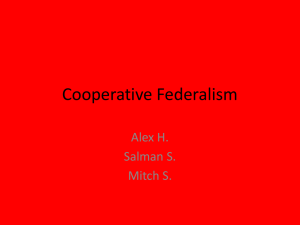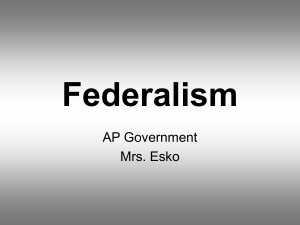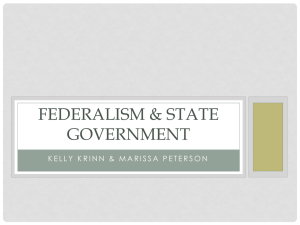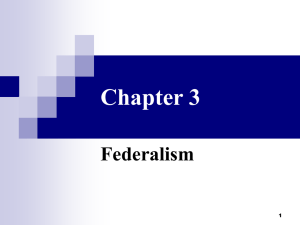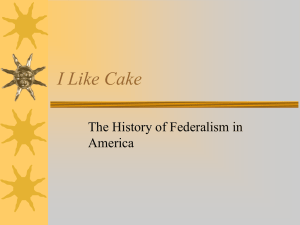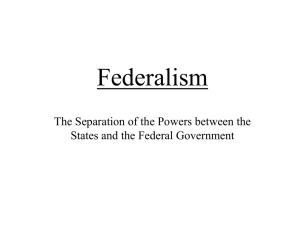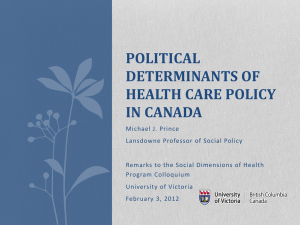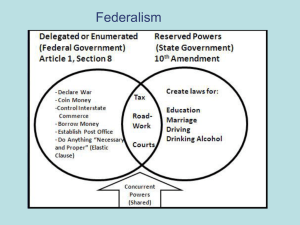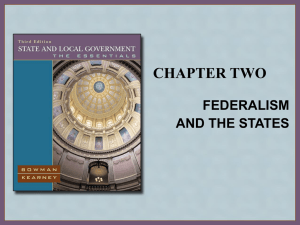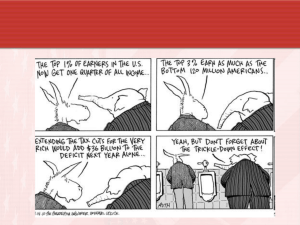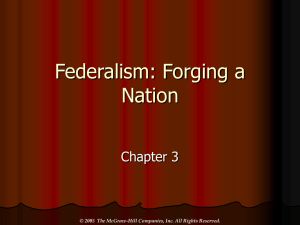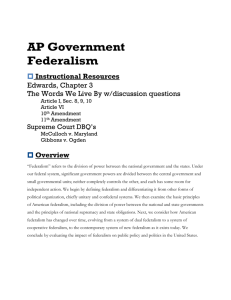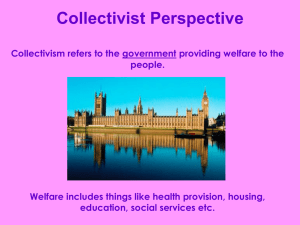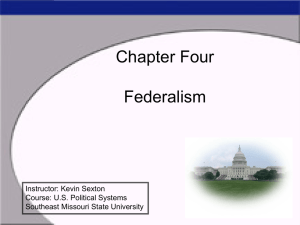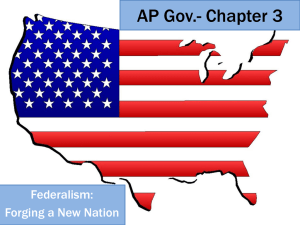From Welfare State to Social Investment to night watchman: shifting
advertisement
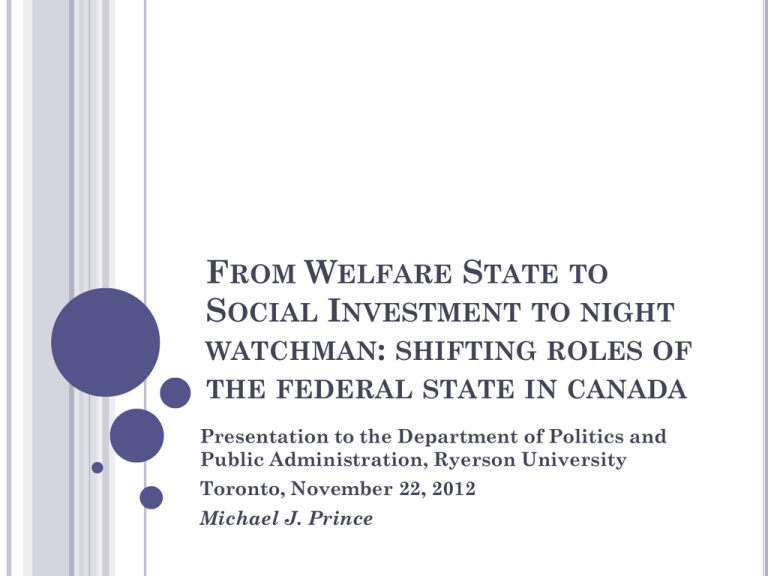
FROM WELFARE STATE TO SOCIAL INVESTMENT TO NIGHT WATCHMAN: SHIFTING ROLES OF THE FEDERAL STATE IN CANADA Presentation to the Department of Politics and Public Administration, Ryerson University Toronto, November 22, 2012 Michael J. Prince INTERPRETING THE STATE AND THE SOCIAL “Listening to and taking seriously discursive constructions and re-constructions of the role of the state can provide a first indicator of change.” (Jenson and Saint-Martin 2003) “Indeed, the intellectual evolution of a nation can be traced, in part, by charting the rise and fall of competing interpretations of government.” (Banting 1986) The state is an assemblage of formal authorities, organizational structures and processes, policy instruments, relations of power, material resources and practices, as well as discursive and symbolic aspects The social is also multi-faceted conceptually and materially, a dynamic and contested policy space operating within historically specific contexts 2 THE THREE IMAGES AND ROLES Welfare state: Social Investment state: Term emerged in the 1940s Depicts a period of state intervention across a range of public activities, services, benefits, and human needs A phrase used mainly by academics and activists Term popularized in 1990s and early 2000s Reaction to neo-liberal critiques of the welfare state Emphasizes productive aspects of certain social programs Discourse of academics and policy makers in Europe and North America Night Watchman state: Oldest of the three conceptions of the state, 19th century Revival in post-9-11 world in some nations Limited discussion to date in policy communities, more so by some academics 3 SOME QUESTIONS What interpretations of the state are now at play in Canada? What is the Harper Conservative’s conception of the federal role in the federation? How and where is the Harper perspective evident in public policy? What might this mean materially for social policy, for intergovernmental relations, and for citizenship? What does it mean conceptually for the study of Canadian politics and public administration? 4 COMPARING THREE IMAGES OF THE STATE Welfare state Social investment Night watchman Orientation Redistributive Productive Regulative Notion of security Compensation and insurance Early intervention and adaptation Personal and community protection Risks Unemployment , old age, sickness, disability, workplace injury Work-life family balance, aging population, skill deficits in knowledge economy Bullying, identity theft, human trafficking, immigration fraud, border security Policy instruments Taxes and “passive” cash transfers “Active” services and programs Legislation and rules, and state facilities Political age Keynesian, Post- Anti-terrorism, 5 HARPER, FEDERALISM AND SOCIAL POLICY Rhetoric of “open federalism” or classical federalism, true in some policy areas but no so much in others Open federalism meant cancelled agreements on child care and early learning and on Aboriginal services In law and order agenda, more like “obligation federalism” with unilateral federal action and the imposition of considerable spending responsibilities onto provinces Criminal law power preferred policy instrument rather than federal spending power: legal elements of citizenship Confining discretion of judges and parole boards while widening discretion of police and immigration officials 6 WAYS OF UNDERSTANDING DEVELOPMENTS IN THE SOCIAL ROLE OF THE STATE 1. 2. 3. A major change forward: Over past decade or so, welfare states are transforming to social investment states ( a change from one state form to another with the substitution of one kind of expenditures for another more active and targeted kind of government spending) A slide back in time: Increasing emphasis on national security and public order indicates a movement from a social state to a night watchman style of governance (a sliding back from one state form to another) A stacking and shifting of roles: Changes in the salience of discourse and in priorities of governments but underlying architecture and activities of state remain a complex and contradictory mix (a stacking of paradigms and discourses and shifting in relative emphasis) 7 IMPLICATIONS FOR STUDENTS OF POLITICS, PUBLIC ADMINISTRATION AND SOCIAL POLICY Probe behind the latest policy discourse Always the intergovernmental: interdependencies and externalities even under “open federalism” Look at historical contexts, trace policy legacies, the circulation of ideas, and path dependencies Continued provincialization of social policy and programs and variations across the country Activities and focus of social movements and civil society organizations Examine the substance and the spin: the material as well as the symbolic, including labour markets and social risks 8 SUMMARY Stephen Harper's perspective on social policy is generally minimalist, tactical politically, and philosophically Hobbesian Recent emphasis on criminal law power and making rules on policing, sentencing, corrections Social investment in Canadian policy is more than a sound bite but less than a new phase in state formation; evident mostly in provincial spheres than at federal level Changes in the social role of the state involve shifting, resurfacing , and submerging various aspects of government, rather than outright substitution of one role or paradigm for another Federal and provincial states thus have layered characteristics and sedimentary outcomes 9 THANK YOU Michael J. Prince Lansdowne Professor of Social Policy Faculty of Human and Social Development University of Victoria mprince@uvic.ca 10


